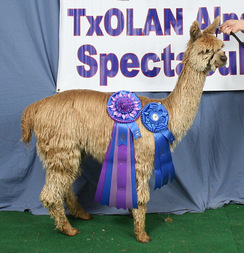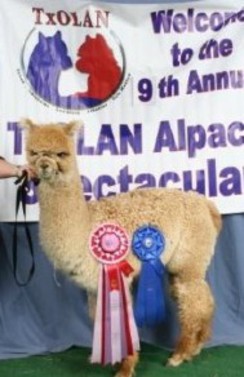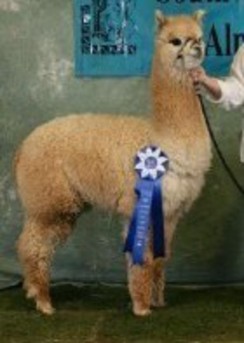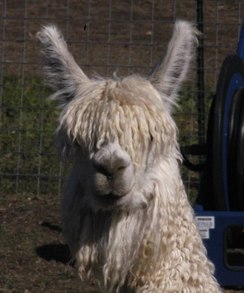About Alpacas

Suri juvenile

Huacaya juvenile

Huacaya Juvenile

Suri head
Alpaca Facts
Alpacas
produce one of the world's finest and most luxurious natural fibers. It
is clipped from the animal without causing it injury.
Soft as cashmere and warmer, lighter and stronger than wool, it comes in
more colors than any other fiber producing animal (approximately 22
basic colors with many variations and blends).
This cashmere-like fleece, once reserved for Incan royalty, is now enjoyed by spinners and weavers around the world.
- Alpaca is found naturally in 22 distinct colors.
- The fiber can also be blended to produce and infinite array of natural colors.
- Alpaca has a natural, rich luster that gives garments high visual appeal.
- The strength of the fiber does not diminish as it becomes finer, thus making it ideal for processing.
- The fiber from Alpaca is unusually strong and resilient.
- Alpaca is warmer and lighter, stronger, and far more durable than wool.
- Alpaca is soft, supple and smooth to the touch.
- The cellular structure of the fiber produces a soft handle unmatched by most other specialty fibers.
Huacaya Alpacas were first imported to the United States in 1984, with Suri Alpacas arriving in 1991. Alpacas are
now being successfully raised and enjoyed throughout North America and
abroad.
There are two types of alpacas - the Huacaya and the Suri. The lifespan
of the alpaca is about 20 years and gestation is 11.5 months.
Alpacas eat grasses and chew a cud. They are about 36" tall at the
withers and weigh about 150 pounds. They are gentle and easy to handle.
Alpacas are safe; they don't bite or butt. Even if they did, without incisors, horns, hoofs or claws, little harm can be done.
Clean-up is easy since alpacas deposit droppings in only a few places in
the paddock. They require minimal fencing and can be pastured at 5 to
10 per acre.
Alpaca owners enjoy a strong and active national organization. The
Alpaca Owners Association (AOA) (formerly AOBA) with a growing number of
Regional Affiliates and AOA-sanctioned national committees addressing
every aspect of the industry.
The Alpaca Fiber Cooperative of North America (AFCNA) accepts fleece
from its members, and turns the precious textile into quality alpaca
garments and products.
Members benefit from a ready outlet for their fiber, while the
cooperative works to increase awareness of and demand for this every day
luxury.
The Alpaca Registry has been established to help ensure accurate records
and has a state-of the-art system to document bloodlines.
Alpacas must be blood-typed in order to be registered. Most alpacas in the U.S. is registered. Alpacas MUST be registered to compete in the AOA Show System, as well as register offspring.
|